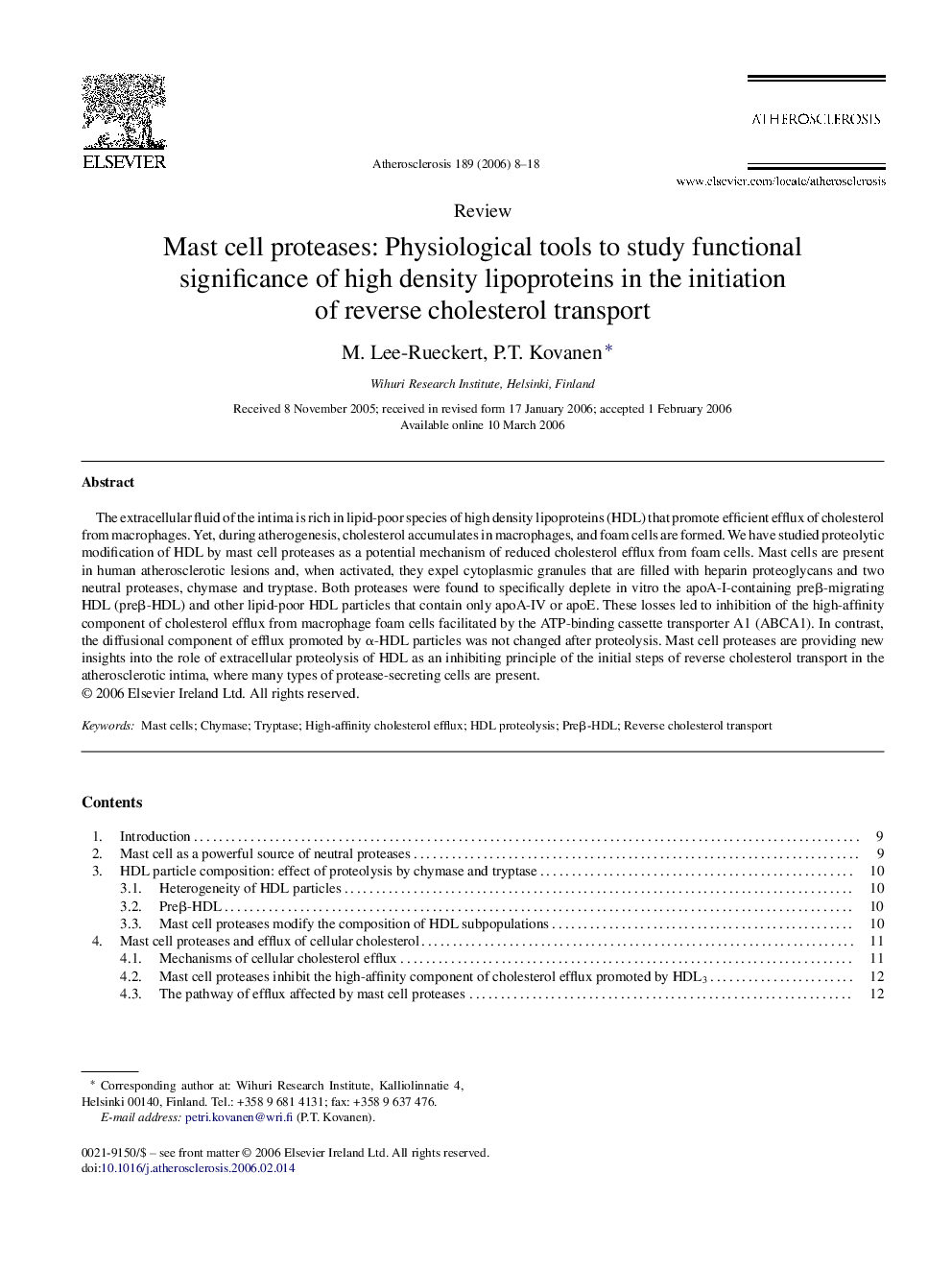| کد مقاله | کد نشریه | سال انتشار | مقاله انگلیسی | نسخه تمام متن |
|---|---|---|---|---|
| 2895140 | 1172451 | 2006 | 11 صفحه PDF | دانلود رایگان |

The extracellular fluid of the intima is rich in lipid-poor species of high density lipoproteins (HDL) that promote efficient efflux of cholesterol from macrophages. Yet, during atherogenesis, cholesterol accumulates in macrophages, and foam cells are formed. We have studied proteolytic modification of HDL by mast cell proteases as a potential mechanism of reduced cholesterol efflux from foam cells. Mast cells are present in human atherosclerotic lesions and, when activated, they expel cytoplasmic granules that are filled with heparin proteoglycans and two neutral proteases, chymase and tryptase. Both proteases were found to specifically deplete in vitro the apoA-I-containing preβ-migrating HDL (preβ-HDL) and other lipid-poor HDL particles that contain only apoA-IV or apoE. These losses led to inhibition of the high-affinity component of cholesterol efflux from macrophage foam cells facilitated by the ATP-binding cassette transporter A1 (ABCA1). In contrast, the diffusional component of efflux promoted by α-HDL particles was not changed after proteolysis. Mast cell proteases are providing new insights into the role of extracellular proteolysis of HDL as an inhibiting principle of the initial steps of reverse cholesterol transport in the atherosclerotic intima, where many types of protease-secreting cells are present.
Journal: Atherosclerosis - Volume 189, Issue 1, November 2006, Pages 8–18